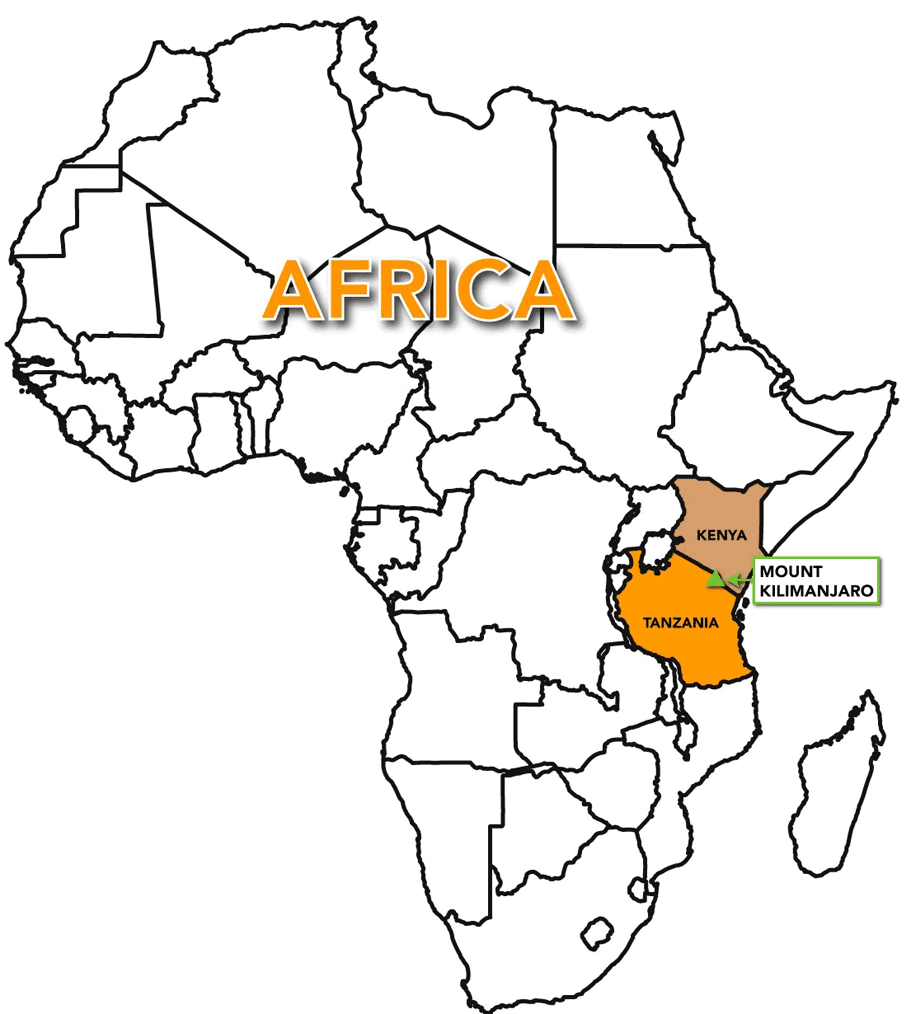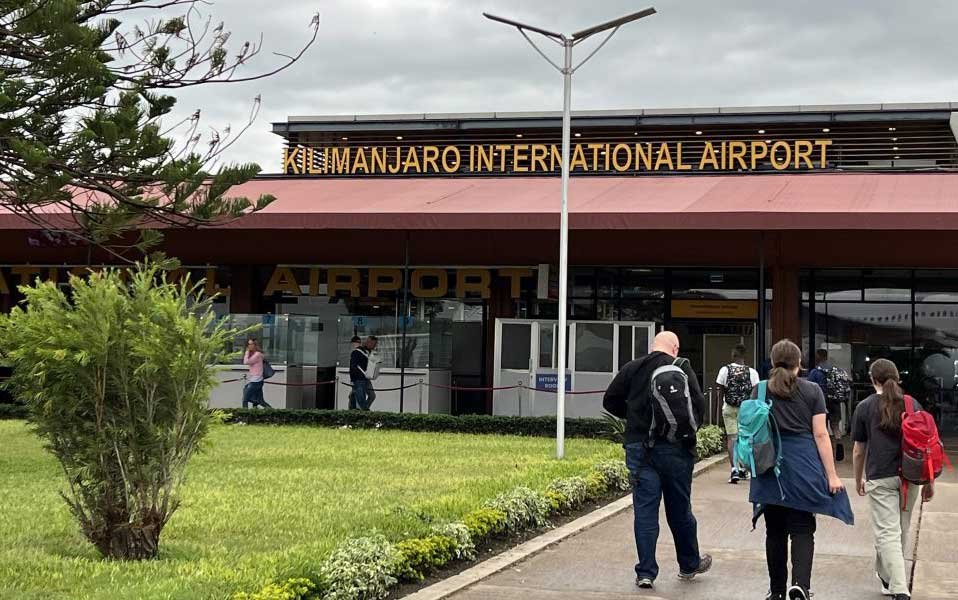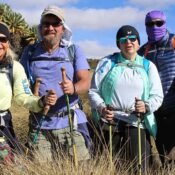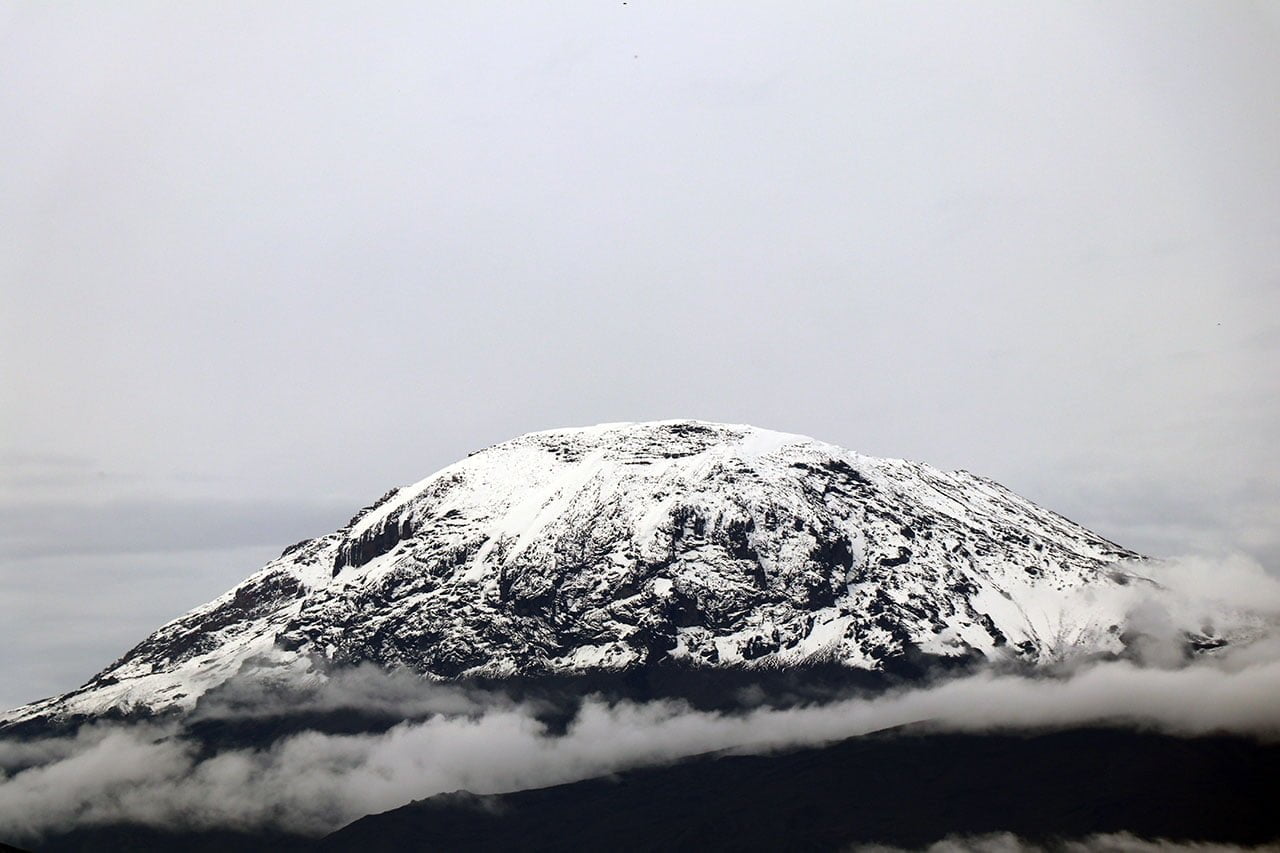Where is Kilimanjaro
Mount Kilimanjaro, located in Tanzania, is Africa’s highest mountain at approximately 5,895 meters (19,341 feet) and the world’s highest freestanding mountain. It’s about 200 miles south of the Equator.
Mount Kilimanjaro, one of the Seven Summits, is located on the African continent and stands 19,341 feet (5895 metres) above sea level at its highest point, Uhuru Peak. It was formed approximately 750,000 years ago, around the same time as the Great Rift Valley. The last major eruption is thought to have occurred approximately 360,000 years ago.

Unlike Everest, which is part of a mountain range formed by the earth’s tectonic plates colliding, Kilimanjaro is a volcano and one of the world’s largest. Kilimanjaro’s summit is not a “peak”; it is the highest point on the crater rim of Kibo, the largest volcanic cone. The crater rim extends beyond the volcano’s center.
It is possible to enter the crater and see the Ash Pit, where sulfurous fumes erupt, a reminder of the now-dormant volcanic past. Camping on the crater floor, among the glaciers, is occasionally an option for experienced, well-acclimatized climbers.
There are two other volcanic cones: Mawenzi, a technical climb, and the Shira plateau, a flat area formed when the former peak collapsed.
Kilimanjaro National Park, a UNESCO World Heritage Site, was established in 1973 to protect and conserve the area’s delicate flora and fauna. The National Parks Authority is in charge of issuing permits to climb Kilimanjaro.
Mount Kilimanjaro Location and Geographic Coordinates
| Height/Elevation | 19,340 ft (5,895 m) |
| Prominence | 19,303 ft. (5,885 m) Ranked 4th |
| Location/Country: | Tanzania, near Kenyan border in East Africa |
| Type | Stratovolcano |
| First ascent | 1889 by Hans Meyer, Ludwig Purtscheller, Yohanas Kinyala Lauwo |
| Nearby Cities: | Moshi, Arusha |
| Nearby Airport: | Kilimanjaro International Airport (JRO) |
| Geographic coordinates | 03°04′33″S 37°21′12″E / -3.07583, 37.35333 |
Where do the Mount Kilimanjaro Climbs Begin?
The Tanzanian towns of Moshi and Arusha are the primary starting points for any Kilimanjaro climbing adventure. Most tour operators base their operations in one of these towns, which are bustling with activity and offer a variety of good lodging, restaurants, shops, and markets.
Moshi is closer to the international airport, about 40 minutes by road, than Arusha, which is about 90 minutes.
How do I get to Kilimanjaro?
The closest major cities to Kilimanjaro National Park are Arusha and Moshi. The closest international airport is Kilimanjaro International Airport

(JRO), which is served on a daily basis by several airlines. Depending on where you are coming from, you can usually fly directly to JRO via the Gulf (Qatar Airlines, Emirates) or Europe (KLM).
Alternatively, you can fly into Tanzania’s capital, Dar-Es-Salaam (DAR), for a short internal flight, or to Kenya’s Jomo Kenyatta International (NBO) airport, where you can connect to JRO via Kenya Airways or Precision Air. Read more about how to get to Mount Kilimanjaro.
You can also travel by road from Kenya. There are numerous bus and shuttle options to get you to Moshi or Arusha, though the roads can be rough at times; consider this if you’re feeling adventurous, want to save money, and have plenty of time.
Other Considerations For Mt Kilimanjaro Travel
Examine your passport and visa requirements, including any transit country visa requirements, well in advance of your reservation.
Verify that you have received all recommended vaccines, including those against yellow fever, especially if you will be spending a stopover in a risky area (like Kenya).
Get there a few days before your hike. This provides you time to get enough rest before beginning your ascent and accounts for any unforeseen delays.
Before and after your climb, we arrange for lodging in one of our fantastic options so you can relax and make the most of your time on the mountain.
We are available to assist. We can help you find local hotels, organize your vacation itinerary, and address any questions you may have!
Discovery and Early Attempts to Climb Mt Kilimanjaro
The Greek mathematician Ptolemy made reference to a “great snow mountain” on the African continent as early as the second century AD. A “great mountain West of Zanzibar” was later mentioned by Oriental traders.
In the eyes of the West, Kilimanjaro was not formally “discovered” until 1848, when Johann Rebmann made the journey to the interior to witness the mountain for himself.
The existence of the peak was widely known to people who lived close by! The Chagga people, who are believed to have arrived and established in the region some 400 years ago, now call Kilimanjaro home. Traditional tribal rituals are still practised in the more remote locations, although Moshi and Arusha are now bustling, contemporary towns.
First Official Mount Kilimanjaro Summit
The first time Hans Meyer and his guide Yohani Lauwo stood atop Kilimanjaro was on October 6, 1889. Although the locals warned that climbing the mountain caused sickness, nothing was known at the time about the effects of altitude.
Sheila MacDonald, a 22-year-old Scot, was the first woman to reach the top in history. Her zenith came in 1927.
How Tourism Started Around Mt Kilimanjaro
In the 1920s, the first huts were constructed on Kilimanjaro. Richard Reusch founded the East African Mountain Club, and he and Clement Gillman trained mountain guides and conducted Kibo summit excursions.
The ash pit in the middle of Kibo’s caldera was given the name “Richard Reusch Pit” by the Tanzanian government in honour of Richard Reusch. Clement Gilbert is honoured with the name of Gillman’s point on the crater rim.
Since these early days, Kilimanjaro’s tourism industry has expanded rapidly. Each year, hundreds of tourists swarm the cities of Moshi and Arusha. According to some estimates, approximately 35,000 foreign tourists tackle Kilimanjaro each year.
A few quick facts about Mount Kilimanjaro
The name “Kilimanjaro” is of unknown origin. The most popular opinion is that it comes from the Chagga “Kilima” (similar to the Swahili “Mlima” meaning hill or mountain), and “njaro” describing the white covering of snow and glacial on the summit.
The summit of Kilimanjaro, now known as Uhuru Peak, was originally in colonial times known as “Kaiser Wilhelm Peak”
In 1927, Richard Reusch apparently found the frozen remains of a leopard at the crater rim. Later mentioned in Ernest Hemingway’s book The Snows of Kilimanjaro, no one knows for sure whether it’s fact or fiction.





